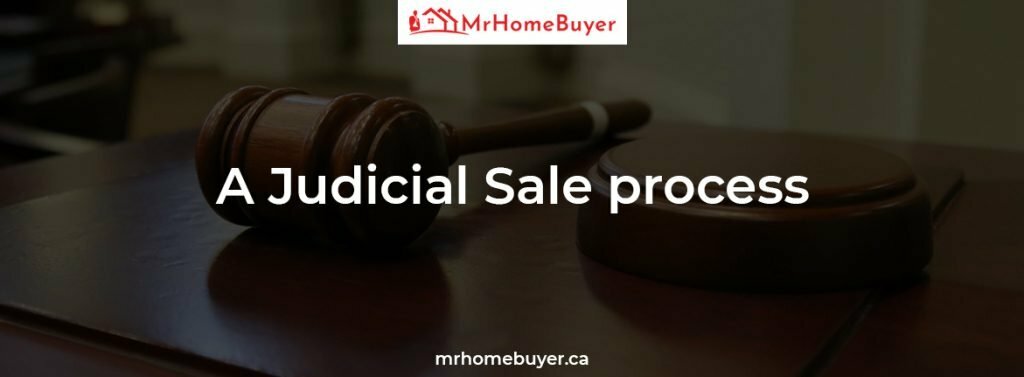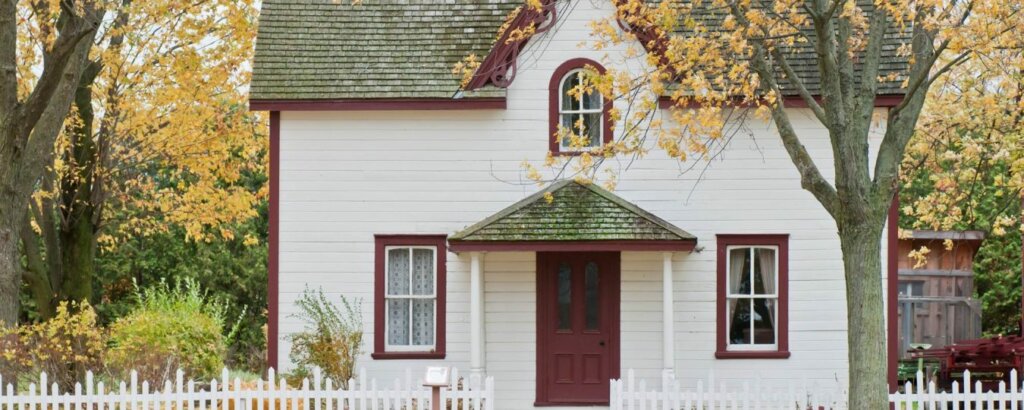Albertan homeowners often find themselves at the receiving end of an exceptionally complex and confusing foreclosure process. Whether you are dealing with foreclosure proceedings or considering purchasing a foreclosure, understanding your options is crucial. As the market shifts and legal requirements change, it is increasingly vital to know one’s rights and options associated with foreclosure.
What Triggers a Foreclosure in Alberta?
The Foreclosure Act Alberta lists several causes that may be grounds for foreclosure:
- Unaddressed property damage
- Outstanding mortgage payments
- Unpaid property taxes
- Lack of required insurance coverage
- Unsettled HOA charges or penalties

Any of these items can initiate foreclosure proceedings which will eventually lead to properties being listed in foreclosure listings in Calgary and city of Calgary property auction notifications.
When is it too late to stop foreclosure
- Failure to make timely mortgage payments.
- Failing to pay homeowner taxes.
- Not carrying required home insurance coverage.
- Failure to pay HOA dues or fines.
- Permitting excessive property damage without making repairs.
The home foreclosure process in Alberta is called a Judicial Sale, and here is what homeowners can expect to occur throughout the procedure.
Steps in Alberta’s Foreclosure Process
Before delving into judicial sale foreclosure steps, it’s important for homeowners facing this situation to understand the potential financial repercussions beyond the mortgage debt. The cold hard truth is that the costs of legal type of action taken and individuals hired to handle the foreclosure process are generally passed on to the owners. Essentially, lenders and even insurers can pursue a deficiency judgment after the foreclosure is over in an attempt to recover any remaining mortgage balances in addition to other fees incurred. Now, let’s cover those judicial foreclosure steps in Alberta.

How to Get Out Of Foreclosure
1. Initial Contact From Lender
A lender will generally send owners a letter or call after one payment is missed. While most don’t begin foreclosure after a single missed payment, they do have legal rights to do so. However, most want to work with owners and may allow for a delayed payment (for a fee) to forego the time consuming foreclosure process.
2. Demand Letter
Owners who don’t respond to the initial contact effort on behalf of the lender will often receive a demand letter after the second missed payment. This letter will demand that arrears must be paid immediately to preventing foreclosure and may come from an attorney, the lender or a collection agency.
3. Statement of Foreclosure Claim
Once a lender has begun the foreclosure process in Alberta, owners receive a statement of claim that is filed with the Court of Queen’s Bench. This lets the party know that action has been taken by the lender to secure the title and reclaim the home. Because lawyers handle this paperwork, the borrower is likely to be held liable for additional costs from here on out during a foreclosure.
Potential Actions for Borrowers Facing Foreclosure
Once a statement of claim has been filed, borrowers will have a number of options they can pursue—some with greater benefits and repercussions than others.
How to Stop Foreclosure and Keep Your Home
1. Take No Action
While this is not typically advised, many borrowers take no action and ignore foreclosure warnings from lawyers and lenders. After the grace period in the notice to take action has passed, lenders can skip ahead to the final stages of foreclosure.
2. Repay Arrears During Redemption Periods
Until a final decree of foreclosure is declared by the courts, Alberta borrowers maintain a right to redemption, known as a foreclosure redemption period. As it’s name implies, this negotiated period usually spans from three to six months and is time that the courts allow for the debtor to ‘redeem’ the mortgage and bring it to current status. In some cases of high-equity properties, lenders may be open to payment arrangements.
3. Statement of Defence
Submitting a statement of defence to the courts is quite expensive, and there are very few acceptable reasons a borrower would be approved to one. For example, if the foreclosure documents filed by the lender are inaccurate or the appraised value is far off base, these may be valid reasons, but the legal expenses to do so will fall upon the borrower.
4. Demand of Notice
A demand of notice essential is a statement that borrowers desire to be kept in the loop concerning the status of a home’s foreclosure. This can be useful to owners attempting to sell the home themselves or are trying to get additional time to save enough to save their home. The demand of notice leaves no room for surprises.
5. Quit Claim
This is where a borrower simply agrees to hand the title over to the lender. This isn’t a recommended action to take in effort to avoid foreclosure actions without legal counsel, as owners are literally giving over any rights to the home and will likely incur additional financial penalties.
6. Consent to the Foreclosure
This is a situation that also requires legal consultation, but it might permit owners to stay in the home longer with certain stipulations and agreements being made with lenders. However, there can be steep costs, and it’s not the first course of action to consider.
Get An Offer Today, Sell In A Matter Of Days… (1)
How To Stop Foreclosure in Alberta?

Many factors go into the foreclosure process of Alberta homes. Lenders can start the process with only one missed payment. But missed payments aren’t the only reasons a lender may pursue foreclosure. Lenders can foreclose on a mortgage for your property for the following reasons:
- Property taxes not being paid
- HOA membership dues not paid
- HOA membership fines not paid
- excessive property damage not being repaired
Immediate Actions
The moment you realize you might miss a payment, contact your lender. Most lenders prefer to work out a solution rather than proceed with foreclosure. They may offer:
- Modified payment plans
- Temporary payment reduction
- Extended loan terms
- Refinancing options
Legal Options
The redemption order Alberta courts provide typically allows 3-6 months for homeowners to:
- Repay arrears
- Submit a Statement of Defense
- File a Demand of Notice
- Consider consent agreements
During this period, homeowners maintain certain rights and can take various actions to prevent property loss.
Last Resort Options
If unable to maintain payments, homeowners can:
- Sell the property before foreclosure
- Explore quit claim options
- Consider supervised sale arrangements
- Negotiate exit terms with the lender
Selling before foreclosure can help protect your credit score, avoid additional legal fees and also have a fresh start.
How to stop a foreclosure auction immediately in Alberta homes through the following steps.
1. The Lender Makes Initial Contact
After the first payment is missed, lenders commonly contact or write the owner. However, when lenders begin the foreclosure process, they are legally entitled. Still, most of them will provide Calgary homeowners with foreclosure assistance by arranging a delayed payment arrangement instead of initiating the foreclosure process, which takes time and money.
2. The Lender Makes Initial Contact
Lenders will send a demand letter if a homeowner cannot be reached by phone or does not respond to a letter after the second payment is missed.
If the lender, collection corporation, or lawyer sends a call for letter to the proprietor, they need to straight away pay any arrears and any late charges to prevent the foreclosure. This letter can come at once from the lender, a set company, or the lender’s legal professional
3. The Claim Of Foreclosure Was Filed
If the lender documents a declare with the Court of Queen’s Bench, he’ll then provide the Alberta house owner with a announcement of declare that outlines what motion has been taken by the lender to reclaim the title to the assets.
The owners ‘ obligation could be all extra costs, together with the attorney’s fee for submitting the claim and some other fees incurred at some stage in the foreclosure technique.
4. Don’t Answer The Phone Or Write Letters
A borrower can pick out to ignore the calls or letters and do not anything, but this is not a advice through any criminal recommend, and it’s miles an choice that many will pick.
Once the grace duration has expired, the lender can proceed with the foreclosure. The lender has supplied the borrower with a grace duration to accurate the situation.
5. Make Up The Missed Payment During The Grace Period
A foreclosure can be stopped during the redemption period, which runs from three to six months before a final foreclosure decree has been issued. If your home is experiencing foreclosure, you can pay your arrears during the grace period.
Many lenders are willing to make payment arrangements in certain circumstances, such as high-equity properties. So call us today, and we will sell your house quickly.
6. Declare Your Defense
There are some instances in which the courts may approve this option, such as inaccurate information included in the foreclosure documents or an incorrect valuation. It will be the borrower’s responsibility to file a Statement of Defense.
7. Send A Demand For Notice
Stating a Demand of Notice by the borrower is a request to be kept apprised of the foreclosure status and the Judicial Sale process Alberta courts order. This is usually done when the owner is trying to keep the property out of foreclosure by selling it or attempting to gather the funds and save their home. A Demand of Notice eliminates any surprises for the owner.
8. Claim To Quit
Attempting to stop foreclosure in Calgary, Alberta, may be possible if a borrower files a Quit Claim. An owner may be willing to sign over their property to the bank upon consultation with a lawyer. However, the owner will still be subject to financial penalties.
9. Consent To Filing Foreclosure
Another scenario that merits legal consultation is when a homeowner is permitted to remain in the home provided the lender meets certain agreements and conditions. However, this is only advisable on the very last resort list due to the high cost involved.
10. Negotiate With Your Lender
If you believe you studied that matters are falling off the rails and you could lose your own home, the primary element you could do to intervene is to negotiate with the lender/ bank. Negotiate a brand new mortgage reimbursement plan – you’ll be amazed to realize that most lenders are willing to barter repayment plans in place of foreclose at the belongings. The only capture is which you’d need to play through their rule, and also you’d have to make the payments frequently.
The lenders often give you two options – mortgage repayment or repayment plan modification. Repayment is pretty much a straightforward process – pay the owed money, then keep making the remaining monthly payments, although you may have to pay a little more than you previously paid each month
Alternatively, you could settle for a payment modification approach. Though complicated, it’s popular. However, it calls for significant changes in the lifestyle of the homeowner – the expenses would have gone up significantly, or the income reduced drastically. Whichever the case, modification plans result in lowered monthly payments and longer repayment periods. You could also choose a modified plan if you expect a fluctuation in your income in the future. Just make sure that you talk to the lender sooner rather than later.
11. Reinstate Your Loan
This approach bringing your mortgage loan to its modern reputation to mitigate foreclosures. For this to manifest, you’d need to pay up the total stability amount, in addition to the costs and consequences incurred as a result of the delinquency. This is also called redeeming the mortgage.
12. Forbearance Plan
When you forebear a loan, it means that the lender must suspend mortgages and other payments for a specific amount of time, often 3-6 months. After the lapse of the forbearance period, the homeowner would have to prepay everything owed, including deficiencies. If you are facing a job loss or a big unexpected expense, this would be a good option for you.
13. Sell Your Property
If all the options above fail or are not ideal for you, your last resort would be selling the property. If you can sell the house, do so, but make sure that the guys handling the foreclosure keep you in the loop as the foreclosure terms are sorted. The great thing about selling is that it saves your credit score and it allows you to get back on your feet.
Frequently Asked Questions About Foreclosure in Alberta
For Property Owners
How long does it take to foreclose on a house in Canada?
The foreclosure process typically takes 6-12 months in Alberta, though timing can vary based on court proceedings and specific circumstances.
Can you stop a foreclosure once it starts in Canada?
Yes. Until the final order is issued, you can stop foreclosure by paying the arrears, negotiating with your lender, or selling the property.
What is the redemption period for foreclosure in Alberta?
The redemption period usually ranges from 3-6 months, during which homeowners can pay off arrears and keep their property.
How do I stop a foreclosure in Alberta?
You can:
- Pay the mortgage arrears
- Negotiate a payment plan with your lender
- Sell the property before foreclosure completes
- File a Statement of Defense
- Consider refinancing options
For Tenants
How long can a tenant stay in foreclosed property in Alberta?
Tenants with a valid lease can typically stay until their lease expires or receive a minimum 90-day notice, whichever is longer.
For Buyers
How to buy a foreclosure in Alberta?
You can:
- Monitor foreclosure listings
- Work with a realtor experienced in foreclosures
- Attend judicial sales
- Submit offers through the court system
Are foreclosed homes cheaper in Canada?
While foreclosed properties often sell below market value, they may require significant repairs and come with additional risks.
Legal Terms Explained
What is foreclosure called in Canada?
In Alberta, it’s called “Judicial Sale” or “Foreclosure.” Other provinces may use “Power of Sale.”
What is the difference between a judicial sale and a foreclosure in Alberta?
In a judicial sale, the property is sold through court supervision, while foreclosure transfers ownership directly to the lender.
What is the power of sale in Alberta?
Alberta doesn’t use power of sale; instead, it uses judicial sale where the court supervises the foreclosure process.
What is the right of foreclosure or sale?
This is the lender’s right to take possession of a property and sell it when the borrower defaults on mortgage payments.
What is a suit for foreclosure?
It’s a legal action filed by a lender to obtain court permission to foreclose on a property.
What is the limitation of foreclosure?
In Alberta, lenders must file for foreclosure within 10 years of the last payment or acknowledgment of the debt.
What is the foreclosure process in mortgage?
The process includes:
- Default notice
- Statement of claim
- Redemption period
- Court-ordered sale or foreclosure
- Final order
Conclusion
So, if your home is about to be foreclosed, read this article to ensure that you have all the right information to save money and avoid foreclosure mistakes. If you are looking for ‘Foreclosure help Calgary’ or ‘Foreclosure help Alberta,’ reputable places like Mr. Home Buyer can help you avoid common foreclosure pitfalls. Even when you are at your wit’s end, this comprehensive guide on the Alberta foreclosure process will save you money and give you back some form of sanity.

